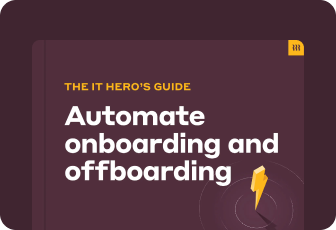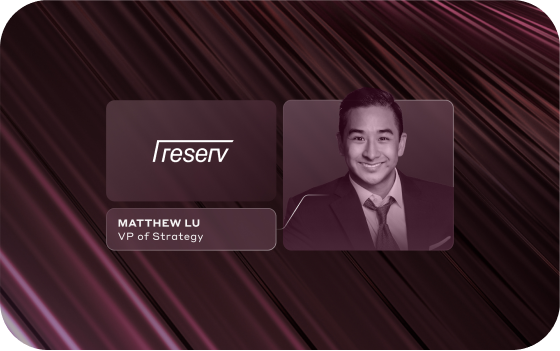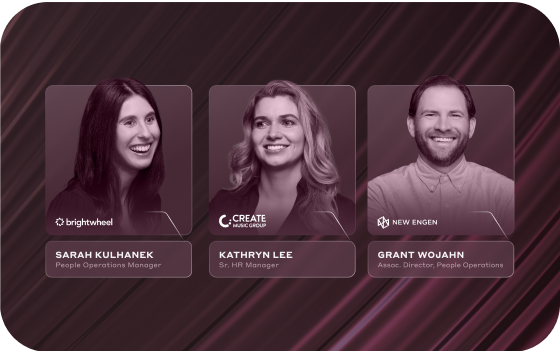The L-1B visa is a non-immigrant visa category designed for companies to transfer foreign workers with specialized knowledge to their US branches, affiliates, or parent companies.
This way, multinational companies can maintain consistent operations globally and transfer key experts with unique knowledge of the company's products, services, or processes to share specialized skills across operations in international markets.
L-1B visa eligibility
Visa requirements for employees
To obtain work authorization with an L-1B visa, your employee must meet the following criteria:
- Possess specialized knowledge relevant to the company's operations
- Have been employed by the foreign company for at least one continuous year out of the three years preceding the application in a position requiring specialized knowledge.
Note: The employment by the company requesting the visa needs to be continuous but allows for normal breaks, like vacations or sick leaves.
Specialized knowledge in the L-1B work visa context means an advanced understanding of the organization’s products, services, research, equipment, techniques, management, or other interests not commonly found in the industry
This knowledge must be:
- Specific to the petitioning organization
- Not readily available in the US labor market
- Beyond general skills or expertise in the field
- Obtained through experience and training with the foreign company
Examples of qualifying advanced level of knowledge may include expertise in proprietary technologies or processes or an in-depth understanding of company-specific systems or methodologies.
Visa requirements for employers
The US company requesting the transfer also needs to meet specific criteria to make sure the intracompany transferee is eligible for the L-1B visa.
These conditions include:
Qualifying relationship with the foreign company
The US employer must have a qualifying relationship with the foreign entity, which can be:
- Parent company
- Subsidiary
- Affiliate
- Branch office
Key aspects of this relationship include common ownership and control and documented proof of the relationship, such as stock certificates, tax returns, and organizational charts.
Interestingly, the L-1B visa can also be used to establish new offices in the United States. This provision allows companies to send specialized knowledge workers to help set up operations, fostering international business expansion. In these cases, the initial visa is granted for one year, with the possibility of extensions if the new office proves successful.
Active business operations
Both the US office and foreign entities must be actively engaged in business for the US branch to be able to file an L-1 petition. This means that they need to:
- Provide goods or services regularly, systematically, and continuously
- Have a physical presence in both countries
- Be able to prove ongoing business activities through documentation
For new offices, which means US entities are operating for less than one year, the conditions are as follows. They must:
- Have secured physical premises
- Be ready to commence business operations
- Show financial ability to support an executive or managerial position within one year of the L-1B beneficiary's admission
These criteria ensure that the L-1B visa program serves its purpose of making the transfer of specialized knowledge easier within multinational organizations while maintaining program integrity. It’s also what makes it an attractive option for companies that need certainty in their workforce planning.
The L-1B visa application process
The L-1B visa application process is generally initiated by the employer. Here's a simplified overview of the entire process.
- The employer needs to file Form I-129 (Visa Petition for a Nonimmigrant Worker) and the supporting documentation with USCIS (US Citizenship and Immigration Services) on behalf of the employee. This petition includes documentation proving that the US company and the foreign entity have a qualifying relationship and verifies the employee's qualifications and the nature of the specialized knowledge.
- The employer then pays the filing fees:
- Fraud prevention and detection fee: $500
- Form DS 160 filing fee: $205
- Visa petitioning fee when submitting Form DS-160: $190
- Form I-129 filing fee:
- Public law fee for companies with 50 or more employees, where over 50% hold L-1 visa status: $4,500.
- Asylum program fee (as of April 1, 2024):
- Premium processing fee (optional): $2,805
- You will then need to await the USCIS decision. Standard processing can take several months, but if using Premium Processing, USCIS will respond within 15 calendar days. Be prepared to respond to any Requests for Evidence (RFEs) promptly.
- Once the petition is approved, the employee can apply for the L-1B visa at a US embassy or consulate in their home country. This typically involves submitting additional paperwork—the online DS-160 form (Nonimmigrant Visa Application) and paying the visa application fee (currently $190).
- Schedule a visa interview at a US Embassy or Consulate. Make sure you bring all required documents, including valid passport, DS-160 confirmation page, approved I-129 petition and Form I-797 approval notice, evidence of intent to return to home country after visa expiration, and proof of employment and qualifications.
- The consular officer will inform you if the visa is approved, denied, or if additional processing is required. If approved, you'll typically receive your passport with the visa within a few days.
- Once you have your visa, you can make arrangements to enter the US. Be prepared for inspection by US Customs and Border Protection at your port of entry.
- Once the employee has settled, they can begin their work for you as their petitioning employer. Don’t forget to file for stay extensions before the employee’s initial stay period expires.
Note: Some employers explore options for transitioning to L-1A status or pursuing a green card. If this is your case, you will need to start the process well before the employee’s L-1B status expires.
Blanket L Petition Approval for frequent intracompany transfers
The L1 blanket visa program offers a significant advantage for multinational companies that want to transfer several employees at once, or anticipate needing to transfer more personnel within the next three years.
The US-based qualifying organization can file this blanket petition through Form I-129S, bypassing the need for individual I-129 petition approvals.
To qualify for L1 Blanket certification, companies must meet specific requirements:
- The US entity and its affiliates must be involved in commercial trade or services
- The US office must have been operational for at least one year
- The company must have three or more domestic and foreign branches, subsidiaries, or affiliates
- The organization must meet one of the following conditions:
- Obtained approval for at least 10 L1 workers in the past year
- US subsidiaries or affiliates have combined annual sales of $25 million or more
- US workforce of at least 1,000 employees
This streamlined process can significantly reduce processing times and administrative burdens for eligible companies, making it an attractive option for large multinational corporations with frequent intracompany transfers.
How long does an L-1B visa last?
The duration of the L-1B visa can vary depending on circumstances.
- For employees transferring to an existing US office: Up to three years
- For employees opening a new office in the US: One year
L-1B visa holders can apply for extensions of their initial stay in increments of up to two years. The total maximum stay allowed on an L-1B visa is five years. After reaching this limit, no further extensions are possible under L-1B status.
It's important to note that for those establishing new offices, the initial period is shorter (one year) but can be extended if the new office proves successful.
L-1B visa FAQs
What’s the difference between the L-1B and L-1A visas?
L-1B is for employees who are transferred to the US in specialized knowledge capacity, while L-1A visa is for managers and executives. Both are nonimmigrant visas, meaning they are temporary and do not automatically lead to permanent residency.
However, both L-1A and L-1B visas allow for "dual intent," which means visa holders can pursue immigrant status (a green card) without jeopardizing their current nonimmigrant status. The key distinction lies in the job roles and the potential pathways to permanent residency, with L-1A often providing a more straightforward route to an employment-based green card.
What happens if you need the employee to stay longer than five years?
If a company needs the L-1B visa holder to prolong their period of stay, it has several options:
- File for a adjustment of status of the employee to switch to a different visa type before the L-1B expires (for example, switch to the L-1A visa, for which the employee must be coming to the US to work in a managerial or executive capacity)
- Consider pursuing a green card
Disclaimer: It’s always recommended to consult an immigration lawyer for official legal advice on your employee’s specific case.
Can the employee bring along their family members when moving to USA on a L-1B visa?
Your transferring employee can be accompanied or followed by dependents (spouse and unmarried under 21). Spouses and children can apply for the L-2 visa and, if it’s approved, they’ll generally be able to stay as long as the L-1B employee. This visa also grants them automatic work authorization in the US.
How does the L-1B visa compare to the H-1B visa?
The choice between these two US visas often depends on the specific situation of the employee and employer. The L-1B can be advantageous for multinational companies transferring employees, while the H-1B is often used for hiring new employees from the global talent pool.
Here’s a comparison table for these two visas:
Category
L-1B
H-1B
Purpose
Intracompany transfer (specialized knowledge)
Specialty occupation
Employer requirements
Qualifying relationship with foreign employer
No foreign company affiliation required
Employee requirements
1 year with foreign company in past 3 years
Bachelor's degree or equivalent
Visa cap
No
Yes (annual quota and lottery system)
Duration of stay
Initial 3 years, max 5 years
Initial 3 years, max 6 years
Specialized knowledge
Company-specific
Generally works for their employer exclusively
Spouse work authorization
Yes
Yes
Establishing new offices
Yes
Yes
Rippling and its affiliates do not provide tax, legal, or accounting advice. This material has been prepared for informational purposes only, and is not intended to provide, and should not be relied on for, tax, legal, or accounting advice. You should consult your own tax, legal, and accounting advisors before engaging in any related activities or transactions.









































































































